Many education systems around the world (Ireland included) continue to be enthralled to high stakes exams as a means of assessing students. We still tend to value what we measure, rather than measuring what we really value. As a result, any new innovation that is proposed tends to be measured against the yardstick “will it improve the (Leaving Certificate*) grades of my students?”
*replace as appropriate with the name of the final exam in different countries
We hear the argument all the time when discussing the merits of using technology to improve teaching and learning. But what if it weren’t like that – what if we could focus on objectively assessing value in other ways? What if the discussion about the value that innovative technology brings to the process of education could be framed in a different way?
That was the question we posed to Jim Wynn, CEO of Imagine Education as part of our Friday lunchtime series – and here are 5 alternative ways that we could use to measure the value that innovative use of technology brings to education:
1. Adoption patterns
One of the big problems with technology innovation is that it doesn’t stand still – and adoption rates vary between teachers and learners. It’s also notoriously difficult to predict when and how adoption will happen – the Gartner Hype Cycle is a great illustration of that phenomenon, particularly when applied to education The potential of technology is also often misinterpreted – for example, in the Lewiston Daily Sun on Wednesday 16h May1923, Edison predicted that ‘Movies will replace text books’ (!).
Nevertheless, we need to understand more about technology adoption rates in education – and also how they compare with adoption rates in other aspects of the lives of teachers and learners.
2. Economy
We know that the challenges of the ‘Learning Society’ are different to those of the Agicultural and Industrial Societies before it. There is plenty of evidence to suggest that there is a skills mismatch in the workforce readiness of new entrants to the labour market. The demand for higher-order problem solvers is increasing – as are rates of youth unemployment.
An OECD study from 2010 – The High Cost of Low Educational Performance – indicated that even a modest improvement of 25 points in PISA scores for all OECD countries in 20 years would deliver an aggregate GDP gain of USD115 trillion over the lifetime of the generation born in 2010. Where technology is being used to promote higher order skills, we need to be measuring that impact. If we know that using technology to support teaching and learning better prepares students for work, we should be able to demonstrate that.
3. Pedagogy
Of course, the use of technology on its own does not necessarily improve teaching and learning. Yes, it can make the process more engaging – see the diagram below which tracks the brain activity of a learner over a 7 day period. Note the activity levels when the learner is asleep – compared to in class!
But to be really effective, the technology should be allied with the introduction of new and innovative pedagogies. The work of Dr Paul Howard-Jones from the University of Bristol has already demonstrated the connection between neuroscience, games and learning – and the effect that redesigning the learning experience can have on dopamine production in the brain (See https://www.youtube.com/watch?v=aKFjoF-YO20).
Integrating technology effectively requires an evolution in teaching and learning practices – by implication; it requires new skillsets for teachers and learners. Effectively implementing and measuring the impact of those changes is where we should be focusing our efforts.
4. Productivity
Related to effective pedagogies is also the notion of productivity. A decision to incorporate technology into a lesson plan ought to be based on whether or not ‘the lesson’ can be more effectively delivered. Can the impact of that step change in productivity be measured?
5. Assessment
Finally, we come full circle back to the issue of assessment. If assessment is simply a validation that learning has taken place – and if learning is not a linear process – then surely we ought to be more comfortable with a model that is more flexible. Learning analytics hold the key – gathering data points about individuals as they progress through their learning journey – and devising appropriate interventions to support the personalization of that journey as they go. If technology can help us to derive a more holistic view of a learner’s experiences, then how do we capture that as a measurement of the value that the technology is bringing to education?
Learnovate will be working with Jim in the future to shape research in this space – to move the debate forwards and produce a framework that enables us to more effectively measure the real impact of EdTech innovation.
Martyn Farrows





